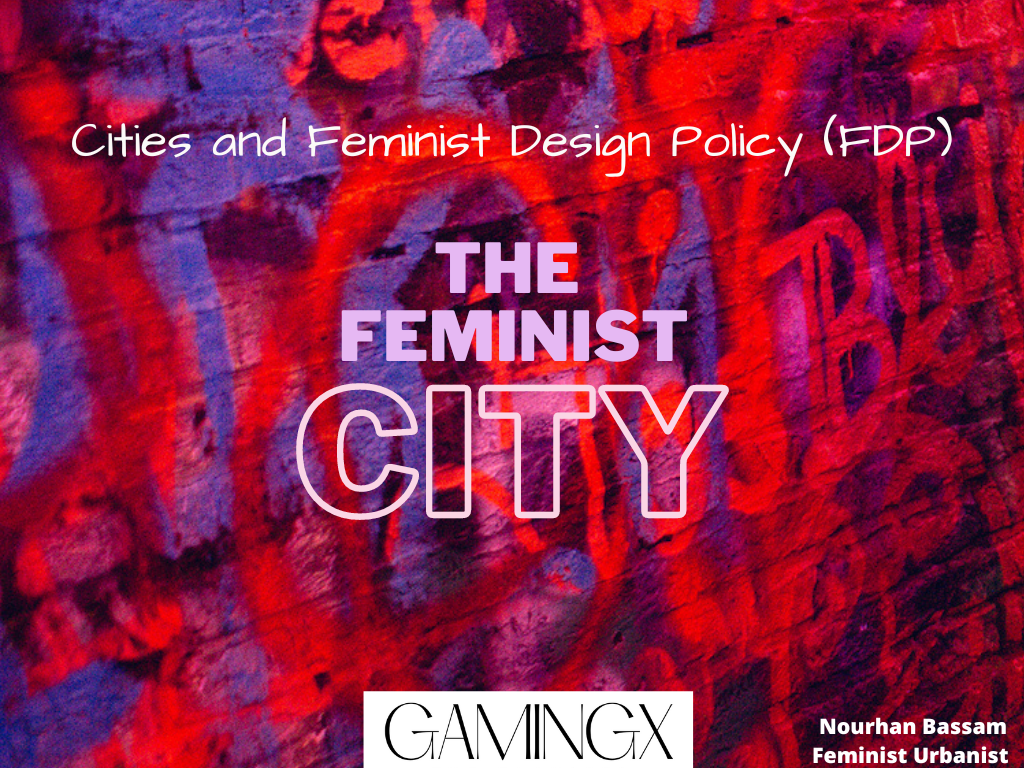
Cities and Feminist Design Policy (FDP)
Feminist Design Policy (FDP) is a relatively new approach to policy-making that seeks to address gender-based inequalities and promote gender equity in design and planning. FDPs aim to create more inclusive and equitable approaches to design by centering the needs and experiences of marginalized groups, including women and other gender minorities.
FDPs can be implemented in various fields, including Urban planning as it aims to create more inclusive and equitable cities by addressing gender-based inequalities in access to public space, transportation, and housing. They also seek to promote safety and security for women and other marginalized groups in public spaces.
But what does FDP mean in city design and planning?
FDPs in cities aim to promote safety, accessibility, and inclusion for all individuals, regardless of gender. By addressing the root causes of gender-based inequalities and biases in urban design and planning, FDPs in cities seek to dismantle harmful power structures and create a more just and equitable urban environment for all.
It can be embodied in many directions:
- Gender mainstreaming across future policies, programs, and actions in cities, including the FDPs in urban sectors.
- Encouraging action-oriented research on the role of negative masculinities in perpetuating urban challenges and identifying opportunities to engage men and boys as agents of positive change in cities.
- Elaborating common guiding strategies for supporting gender mainstreaming, including gender analysis to inform policy-making, programming and spending, and gender mainstreaming at all levels: planning, budgeting, implementation, monitoring, and evaluation of all policies, programs, and activities.
- Supporting fair transitions to more socially and environmentally sustainable urban economies that provide equal entrepreneurship and job opportunities for women and girls.
- Gathering Sex-disaggregated data is critical for understanding the barriers and increasing women’s participation in traditionally male-dominated urban sectors.
- City programs that use gender-based assessments to enhance knowledge of the linkages between gender and urban issues.
- Supporting gender analysis in city planning such as gender employment-sensitive impact assessments of urban adaptation and mitigation plans, including gender analyses of job sectors at the city level.
FDPs aim to create more inclusive and equitable approaches to design by addressing the rootcauses of gender-based inequalities and empowering marginalized groups to participate fully in all aspects of society. By focusing on the needs and experiences of women and other gender minorities, FDPs seek to dismantle harmful power structures and create a more just and equitable world for all individuals.
FDPs can be an effective tool for advancing gender equity in a variety of fields, as they provide a framework for addressing gender-based inequalities and biases in design and planning. By promoting safety, accessibility, and inclusion for all individuals, FDPs can help bridge the gaps in access and opportunity that are often created by male-dominated thinking and planning.
In recent decades, there has been a growing recognition of the importance of addressing gender disparities around the world. Some national governments, such as those in Canada and Germany, are striving for gender parity in their cabinets, while high-profile public and private organizations are increasing the representation of women in senior positions. These efforts offer opportunities for women to enjoy greater access, comfort, and safety in their daily lives. As discussions about gender continue to increase, more governments and global organizations are prioritizing gender-related policies, particularly those aligned with feminist principles. However, despite the promising progress, only eight countries have implemented dedicated Feminist Foreign Policies as of July 2022, including Sweden, Canada, France, Mexico, Spain, Luxembourg, Germany, and Chile. Defining what constitutes a Feminist Foreign Policy on a global scale is a complex process as it requires a willingness to challenge existing power structures and biases, and to work towards creating more inclusive and equitable approaches. It also requires ongoing learning and reflection, as FDPs must be adapted to local contexts and the needs of specific communities. By embracing the principles of FDPs and committing to ongoing growth and learning, we can work towards building a more inclusive and equitable future for all.
Some of the ideas I mentioned here are inspired from
Melissa Bruntlett in “FEMINIST POLICIES IN TRANSPORT” from “women mobilize women”
“EU external action Report on the results of the online targeted consultation April 2nd – May 4th 2020 GENDER ACTION PLAN III 2021 – 2025”
Nourhan Bassam
Feminist Urbanist
Founder of “GamingX” A Think-Tank which is dedicated to promoting community development and empowering marginalized groups through the creation of play spaces and active urban places in the city. Their work encompasses an exploration of gender-sensitive design practices and theories, operating at the intersection of gender, identity, urban space, and advocacy.
Ph.D. Candidate with the scope of sustainable communities, resilient cities, and social inclusivity

Nourhan Bassam
Feminist Urbanist
Founder of GamingX
Ph.D. Candidate with the scope of sustainable communities, resilient cities, and social inclusivity
A Think-Tank which is dedicated to promoting community development and empowering marginalized groups through the creation of play spaces and active urban places in the city. Their work encompasses an exploration of gender-sensitive design practices and theories, operating at the intersection of gender, identity, urban space, and advocacy.